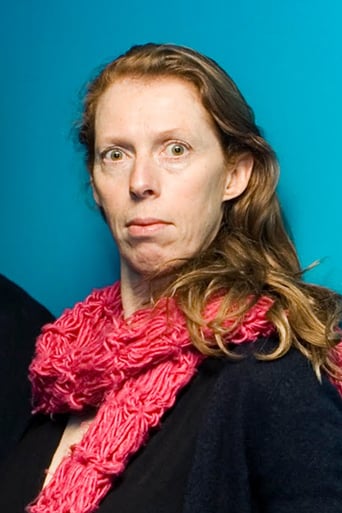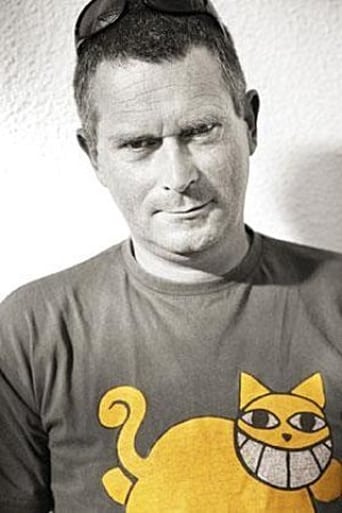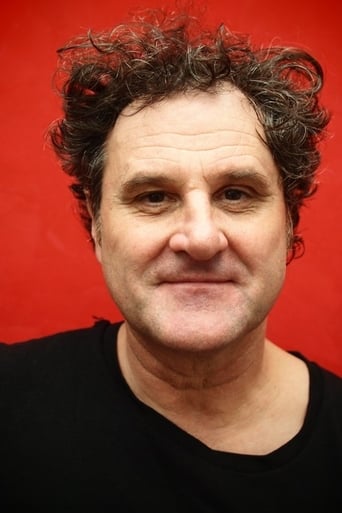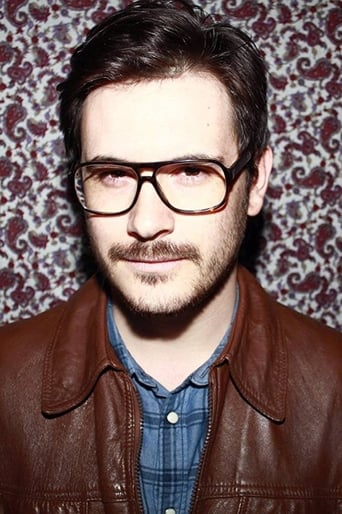Nonureva
Really Surprised!
Borserie
it is finally so absorbing because it plays like a lyrical road odyssey that’s also a detective story.
Merolliv
I really wanted to like this movie. I feel terribly cynical trashing it, and that's why I'm giving it a middling 5. Actually, I'm giving it a 5 because there were some superb performances.
davethemathtutor
This is not the end-to-end dance movie I expected, but a rather dark comedy about a French couple whose passion is Latin dancing. There are some dance scenes in it, and they're very enjoyable, but there are long stretches with no dancing at all. Yet in another sense the entire movie seems like an extended dance.It's in French with subtitles. But not too doggone many subtitles, because long stretches of the movie are told visually, without any dialogue at all. This is one of the movie's charms. Parts of the movie are very charming indeed; other stretches become a bit tiresome; much of it has a cartoonish aspect, even though it's all live-action rather than animation; and all of it is quirky as hell and mostly unpredictable.All in all: I'm at a loss as to how to rate this peculiar film. I guess six or seven stars, something like that.
Alex Hilbert
I usually like European movies but this one felt like an insult from start to finish. There are a couple of dancing scenes, but the male lead is painful to watch in them. The plot doesn't give any help: a ten-year-old could write something better. The actors behave like wooden puppets or robots, unable to show any emotion, and behaving so oddly that it is impossible to think of them as human beings with whom one could identify or empathize. Even bad Hollywood movies have more insight into the human condition than "Rumba" does.If you want a heart-warming dancing movie, the Japanese version of "Shall We Dance?" is infinitely better.
chaos-rampant
This is a very simple, heart-warming film. It's in Tati's vein of flat onedimensionality, which has roots in vaudeville and silent comedy. How this works is that we are placed at a larger viewing distance than usual. We know hardly anything about the protagonists, they are in love and love to dance basically. There is sparse dialogue, we won't know them by what they explain. There's rear projection in the driving scenes, a throwback to the artifice of old films, establishing a stage, a cartoonish-reduction, normally I find this off-putting.But thankfully it is to very powerful effect. Overall the idea is to abstract to a canvas as blank as possible, sparse, a stage with just the people, so that instead of arguing with specific drama, we can register with unusual clarity simply the flow of feelings. It's emptying out.Externally, that is their dance together. They're marvellous together, she a gangly Olive Oyl, he a gangly Mr. Hulot. It's not polished talent (deliberately so) like you might see in a normal dance film, but spontaneous joy, purely the desire to express feelings, shucks about form. It's a flawed dance, much better this way.It's the internal flow that really elevates this though. It's as rich on the inside as it is plain on the outside. As silly or slight as some of the visual gags are, as visually unoriginal the flatness of stage, the lack of depth in the characters, so deep is the human connection between them. I was beaming with joy in the end.Life can be trivial but happy, the film says. There is loss ahead, inserted as just the urge for death in the suicidal man. The loss as loss of memory as the burning down of the house, the man simply can't remember that he ever loved the love of his life. It's sweet and touching.It's nearly transcendent by the end, a series of visual meditations on losing and finding again. The appeal? The larger viewing distance is not so that we can observe with distant cleverness, as in most Wes Anderson. Neither is it to 'ignore' the drama. It's so we can have enough empty space to unfold whole flows, without having the mind 'stop' at each turn. (someone like Bergman 'stops' the mind when he has you dwell in this or that psychological state)So in this way, the film shows very clearly what causes suffering. It is what the film leaves out, that is dwelling with attachment on the particulars of misfortune. On the flipside of that is love as the dancing flow that liberates and redeems. This is simple, deep, a film to cherish.
tedg
Some films begin with the vision of the story, followed by its shaping for the screen. If we are lucky, the match between the edges of the story (or whatever the artist has in mind) and the expression will be cinematic. The things that matter to me are usually in this form.Others begin with a set of tools and resources. You have a rock star, or a collection of gee whiz effects, or franchise characters, and put together a project to exploit this asset. I still can appreciate these if the craft has art, or even competence. Often the vocabulary of cinema is advanced in these projects and exploited in the other kind. I can follow some filmmakers as they wander through these two modes, wonderful filmmakers.This is the second case. We had a performer with a collection of effective tricks developed with her stage partner. She built a situation and story in order to use what she has. The woman in question is Fiona Gordon, a redheaded Australian. Perhaps six two high, gangly but busty, a physique that one would guess is unmanageable.What she has done is master this body, move to Franch where there is stage tradition that supports physical humor. She finds a partner, a talented enough fellow. She fosters a persona of a woman who lives in a separate world, entirely separate except for two points where we can encounter each other: her body art of course, and her language which she uses almost not at all.So the story here is of a woman who teaches English in a rural French school. We almost never hear her speak in French and any speaking is rare. She lives by either being fenced from reality or performing by dancing, where she is unfettered, joyful. She is a real pleasure to watch, a deliberately unsexy character expressing her sexuality. She enters a situation where both are denied to her. At the end, there is some, slight dear reward for her earnestness.The fold: she is married to a man. His relationship to her is precisely the same as hers to the rest of the world, both in language and body expression. He is a physical education teacher in the same school. Where she has what we might call a mental impairment in real life, it seems natural in the world of the film, rendered in cartoonish oversaturated pastels and sparse sets. He lives in a world more removed, a step within the world of the movie. The two have an encounter with a third character, someone who is determined to take everything from himself, and accidentally takes everything from them instead. It woks, because though the story is built to give this woman a path to artistic expression, the story is about her character (also named Fiona) and her relationship to her artistic expression. You will not fall in love with her; you are not intended to. But you will fall in love with the unremitting quest for love and life.There are cute dogs in several guises, also folded in the same way.Ted's Evaluation -- 3 of 3: Worth watching.




